Rivers have been a vital part of human civilization since prehistoric times. They have been used as a source of drinking water, to irrigate crops, to transport goods, and as habitats for wildlife. Rivers have also served as important landmarks in the history of many civilizations around the world. In this article, we will explore the top 10 most famous rivers in the world, their characteristics, and their significance to human history.
1. The Amazon River
The Amazon River is the second-longest river in the world, stretching over 4,000 miles through the dense Amazon rainforest in South America. It is the largest river system in the world by volume of water, accounting for approximately 20% of the world’s total river flow. The Amazon River basin is home to one of the most biodiverse ecosystems in the world, with thousands of plant and animal species found nowhere else on Earth.
The Amazon River has a significant impact on the climate of South America, as it releases vast amounts of water vapor into the atmosphere, which influences the weather patterns of the region. The river is also an important source of fresh water for millions living along its banks.

2. The Nile River
The Nile River is the longest in the world, stretching over 4,100 miles through northeastern Africa. It flows through 11 countries, including Tanzania, Uganda, Rwanda, Burundi, Kenya, Ethiopia, Eritrea, South Sudan, Sudan, and Egypt. The Nile played a crucial role in the development of ancient Egyptian civilization, as it provided water, food, and transportation for the people living along its banks.
Today, the Nile River remains an essential source of water for many African countries. It is used for water supply, transportation, and electric power. The Nile Delta is also a significant agricultural area, producing crops such as rice, cotton, and wheat.
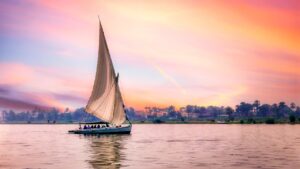
3. The Ganges River
The Ganges River is a major river in northern India, stretching over 1,560 miles from the Himalayas to the Bay of Bengal. It is considered the most sacred river in Hinduism and is worshiped as the goddess Ganga. The Ganges is also an important water source for millions of people in India, as it provides irrigation for crops and drinking water for people and livestock.
Despite its religious significance, the Ganges River is also one of the most polluted rivers in the world. Industrial waste, sewage, and agricultural runoff have led to high levels of pollution in the river, threatening the health of people and wildlife living along its banks.

4. The Mississippi River
The Mississippi River is the second-longest river in North America, stretching over 2,300 miles from Minnesota to the Gulf of Mexico. The river played a significant role in the history of the United States, as it was used for transportation, trade, and agriculture. Cities such as New Orleans, St. Louis, and Memphis were established along the Mississippi River, and the river remains an important source of freshwater for millions of Americans today.
The Mississippi River is also home to various plant and animal species, including bald eagles, alligators, and catfish. The river has faced several environmental challenges, including pollution and habitat loss, but conservation efforts have helped to protect the river and its inhabitants.
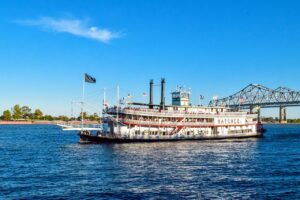
5. The Danube River
The Danube is Europe’s second-longest river, stretching for 1,770 miles from Germany to the Black Sea. The river flows through ten countries, including Germany, Austria, Hungary, and Romania. The Danube River has played an important role in the history of Europe, as it was used for transportation, trade, and defense. Today, the river is an important source of hydroelectric power and fresh water for millions of Europeans.
The Danube River basin is also home to various plant and animal species, including sturgeon, otters, and eagles. Efforts to protect the Danube River and its inhabitants have been ongoing, with several conservation initiatives launched in recent years.

6. The Yangtze River
The Yangtze River is the longest in Asia, stretching over 3,900 miles through China. It is an important source of freshwater and hydroelectric power for the people of China, providing irrigation for crops and transportation for goods. The Yangtze River has played a significant role in Chinese history and culture, with many ancient cities and landmarks located along its banks.
The river is also home to various plant and animal species, including the endangered Yangtze River dolphin. Efforts to protect the river and its inhabitants have been ongoing, with several conservation projects launched in recent years.

7. The Mekong River
The Mekong River is a major river in Southeast Asia, stretching over 2,700 miles through China, Myanmar, Thailand, Laos, Cambodia, and Vietnam. The river is an important source of freshwater and fish for millions living along its banks. The Mekong River basin is also home to various plant and animal species, including the endangered Mekong giant catfish.
The river has faced several environmental challenges in recent years, including pollution and habitat loss. Conservation efforts have been launched to protect the river and its inhabitants, but more work is needed to ensure the long-term sustainability of the Mekong River.

8. The Volga River
The Volga River is the longest in Europe, stretching over 2,200 miles through western Russia. It is an important source of freshwater and transportation for the people of Russia, providing irrigation for crops and hydroelectric power for the region. The Volga River basin is also home to various plant and animal species, including sturgeon, eagles, and bears.
The river has faced several environmental challenges, including pollution and habitat loss. Conservation efforts have been launched to protect the river and its inhabitants, but more work is needed to ensure the long-term sustainability of the Volga River.
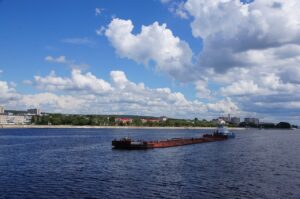
9. The Zambezi River
The Zambezi River is a major river in southern Africa, stretching over 2,200 miles through Zambia, Angola, Namibia, Botswana, Zimbabwe, and Mozambique. The river is an important source of freshwater and transportation for the people of southern Africa, providing irrigation for crops and hydroelectric power for the region.
The Zambezi River is also home to a diverse array of plant and animal species, including hippos, crocodiles, and fish such as tigerfish. The river is perhaps best known for the spectacular Victoria Falls, a UNESCO World Heritage Site located along its course.
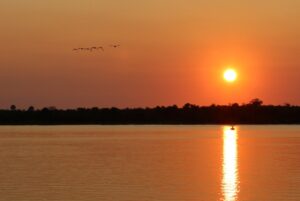
10. The Sepik River
The Sepik River is the longest river on the island of New Guinea, with a length of more than 700 kilometers, and runs through Papua New Guinea. The river is an important source of freshwater and transportation for the people of Papua New Guinea, providing irrigation for crops and fish for food. The Sepik River basin is also home to various plant and animal species, including crocodiles, birds, and fish.
The Sepik River is perhaps best known for its unique and extensive artistic traditions. The isolation of the river’s small tribal groups has given rise to some of the most original and extensive artistic traditions in the world, including woodcarving, pottery, and body art.
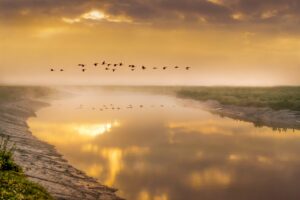
In conclusion, the world’s most famous rivers have played a vital role in human history and continue to provide essential resources for millions of people today. These rivers are also home to a diverse array of plant and animal species, and efforts to protect these habitats are crucial for the long-term sustainability of these important waterways.
ALSO-READ: The Five Components of Health-Related Fitness: A Comprehensive Guide
